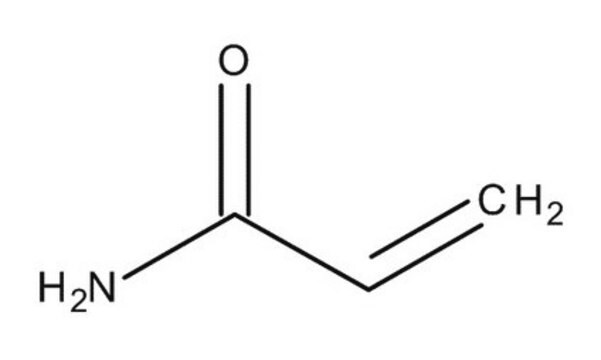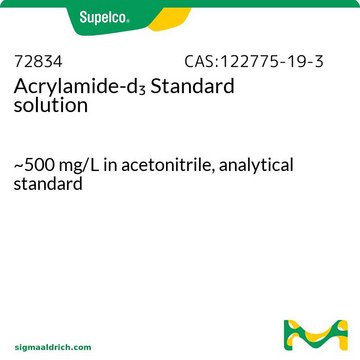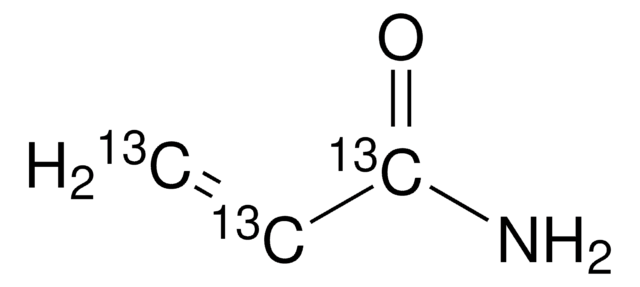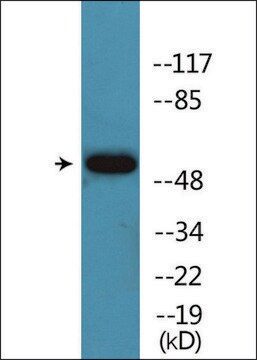01700
Acrylamide
purum, ≥98.0% (GC)
Sinonimo/i:
2-Propenamide, Polyacrylamide, acrylic amide, akrylamid, Acrylic acid amide
About This Item
Prodotti consigliati
Densità del vapore
2.45 (vs air)
Livello qualitativo
Tensione di vapore
0.03 mmHg ( 40 °C)
Grado
purum
Saggio
≥98.0% (GC)
P. ebollizione
125 °C/25 mmHg (lit.)
Punto di fusione
81-87 °C
82-86 °C (lit.)
Solubilità
water: soluble 200 g/L at 20 °C
Temperatura di conservazione
room temp
Stringa SMILE
NC(=O)C=C
InChI
1S/C3H5NO/c1-2-3(4)5/h2H,1H2,(H2,4,5)
HRPVXLWXLXDGHG-UHFFFAOYSA-N
Cerchi prodotti simili? Visita Guida al confronto tra prodotti
Applicazioni
Azioni biochim/fisiol
Avvertenze
Danger
Indicazioni di pericolo
Classi di pericolo
Acute Tox. 3 Oral - Acute Tox. 4 Dermal - Acute Tox. 4 Inhalation - Carc. 1B - Eye Irrit. 2 - Muta. 1B - Repr. 2 - Skin Irrit. 2 - Skin Sens. 1 - STOT RE 1 Oral
Organi bersaglio
Peripheral nervous system
Codice della classe di stoccaggio
6.1C - Combustible acute toxic Cat.3 / toxic compounds or compounds which causing chronic effects
Classe di pericolosità dell'acqua (WGK)
WGK 3
Punto d’infiammabilità (°F)
280.4 °F - closed cup
Punto d’infiammabilità (°C)
138 °C - closed cup
Dispositivi di protezione individuale
Eyeshields, Faceshields, Gloves, type P3 (EN 143) respirator cartridges
Scegli una delle versioni più recenti:
Possiedi già questo prodotto?
I documenti relativi ai prodotti acquistati recentemente sono disponibili nell’Archivio dei documenti.
I clienti hanno visto anche
Il team dei nostri ricercatori vanta grande esperienza in tutte le aree della ricerca quali Life Science, scienza dei materiali, sintesi chimica, cromatografia, discipline analitiche, ecc..
Contatta l'Assistenza Tecnica.






